Crunchy, spicy, and utterly satisfying, wasabi peas are quickly becoming a snacking staple for those looking to add some heat to their day. This bold snack not only tantalizes your taste buds but also packs a surprising punch of nutrients. Whether you’re a fan of their zesty flavor or just curious about what they can offer, there’s more to these green bites than meets the eye.
Take this for instance—just one ounce of wasabi peas provides around 4 grams of protein and only 121 calories. That’s snack efficiency without sacrificing the bold taste we all crave! Are they the ultimate better-for-you snack? Perhaps. But there’s a lot more to uncover. From their benefits for digestion to tips for DIY versions, this guide has you covered. Let’s jump into six jaw-dropping reasons why wasabi peas deserve a spot in your pantry.
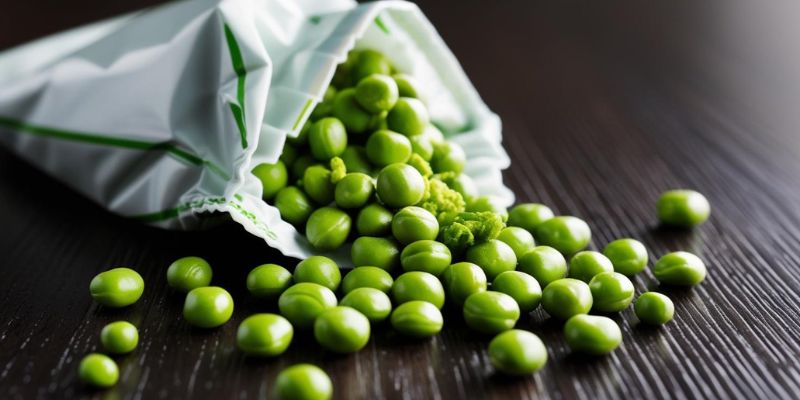
What Are Wasabi Peas?
Wasabi peas are a crunchy snack made from roasted green peas coated in a zesty mixture of wasabi powder, sugar, salt, and sometimes oil. Originating in Japan, these spicy peas combine the umami flavor of traditional wasabi with the crunch of dried legumes, creating a snack that’s enjoyed worldwide.
Interestingly, the fiery sensation you feel isn’t always from genuine wasabi. Many manufacturers use horseradish or mustard to replicate the flavor due to the high cost of authentic wasabi. This doesn’t take away from their bold punch, though, and their versatility as a snack makes them increasingly popular.
You’ll find them in most supermarkets, ranging from spicy variants to lightly salted options marketed as the “best wasabi peas” in the business. Feeling adventurous? You can even make your own at home (more on that later)!
How Are Wasabi Peas Made?
While wasabi peas seem simple at first glance, the process behind their crispy, spicy perfection is anything but ordinary. Each step, from selecting the right ingredients to ensuring every pea is coated evenly, is vital to achieving their signature flavor and texture. Here’s a closer look at how these green powerhouses come to life.
The Core Ingredients of Wasabi Peas
The ingredients used in making wasabi peas are both humble and straightforward, but their combination creates a culinary masterpiece of contrasts:
- Green Peas: These are the foundation of the snack, chosen for their subtle sweetness and crunchy potential. Their small size and round shape hold the coating perfectly, making them ideal for this purpose. Dried peas are typically used to ensure they withstand the roasting process without losing their texture.
- Wasabi Powder or Paste: This key component gives the peas their fiery kick. While authentic wasabi made from the wasabi plant is traditionally used in Japan, it’s expensive and less commonly found in commercial products. Instead, a blend of horseradish, mustard, and green coloring often substitutes genuine wasabi in mass-produced varieties.
- Oil: A small amount of oil is used to help the wasabi coating adhere to the peas during the production process. The type of oil may vary, but vegetable or sunflower oil is common.
- Salt and Sugar: These add balance to the spice, creating that crave-worthy sweet-and-salty tang we love in snacks. The quantities vary depending on the flavor profile brands aim to achieve.
- Optional Seasonings for Variations: Many homemade recipes and commercial options include additional seasonings like garlic powder, soy sauce, or even lime zest to elevate the flavor.
The Drying and Coating Process
Wasabi peas need to achieve the perfect balance of crunch and spice, and that requires careful preparation. The process involves two key phases:
-
Drying the Peas
Fresh green peas (or pre-dried ones, depending on the source) are carefully washed and blanched. This step softens them slightly and prepares them for the upcoming roasting process. After blanching, the peas are left to air-dry or are gently dehydrated. This removes moisture, ensuring the peas retain their crunchiness during and after cooking. -
Roasting for Crispiness
The pre-dried peas are roasted at a controlled temperature to enhance their crisp texture. This is where most of the crunch develops, making them more enjoyable to eat. The roasting process can take some time but is an essential step to lock in their signature texture. -
Coating with Wasabi Mix
The roasted peas are tossed in a carefully prepared mixture of wasabi paste or powder, sugar, salt, and occasionally a binding agent like cornstarch. This paste evenly coats each pea, ensuring that every bite delivers the iconic wasabi flavor. -
Final Roast or Drying
After coating, the peas go through another round of roasting or drying. This step sets the seasoning and enhances the overall flavor, giving you the delicious, crunchy wasabi peas you’ll find on shelves.
How to Make Wasabi Peas at Home
Want to replicate this delicious snack in your own kitchen? It’s simpler than you’d think, and you can customize the recipe to suit your dietary needs or flavor preferences. Here’s a step-by-step guide to making your very own wasabi peas:
Ingredients You’ll Need
- 1 cup of dried green peas (available in most grocery stores).
- 2-3 tablespoons of wasabi powder (adjusted to your spice tolerance).
- 1 teaspoon of rice vinegar or white vinegar.
- 1 teaspoon of sugar (optional, for balance).
- A pinch of salt.
- 1 tablespoon of vegetable oil or your preferred cooking oil.
Instructions
-
Prep the Peas
- If using fresh peas, blanch them by boiling for 2-3 minutes, then shock them in ice water to stop the cooking process. Drain thoroughly and allow them to air-dry on a clean kitchen towel. If starting with dried peas, simply give them a quick rinse under cold water to remove any residue.
-
Roast the Peas
- Preheat your oven to 225°F (110°C). Spread the peas in a single layer on a baking sheet lined with parchment paper. Roast the peas for 2–3 hours, stirring occasionally, until they’re dry and crunchy. Ensure they don’t burn, as this will compromise the flavor.
-
Prepare the Wasabi Coating
- While the peas are roasting, mix together wasabi powder, vinegar, sugar, salt, and oil in a small bowl. You’re looking for a smooth, paste-like consistency that’s easy to spread. Adjust the proportions of sugar and salt to balance the heat to your liking.
-
Coat the Peas
- Remove the peas from the oven and carefully toss them in the wasabi mixture until they are evenly coated. Use a large mixing bowl for this step to make sure no pea is left unseasoned.
-
Set the Coating
- Return the coated peas to the baking sheet and roast them for another hour while stirring occasionally. This turns the coating dry and crispy, ensuring the tangy wasabi flavor doesn’t rub off.
Variations for Dietary Preferences
- Lower Sodium Version: Reduce or eliminate the added salt and use a pinch of lemon zest for a tangy twist.
- Extra Spicy Option: Add a dash of cayenne pepper or a bit more wasabi powder for an intense kick.
- Sweeter Flavor: For a sweet-and-spicy snack, replace regular sugar with honey or brown sugar for a deeper flavor profile.
Storage Tips
Once cooled, transfer your homemade wasabi peas to an airtight container to preserve their freshness and crunch. They’ll last up to two weeks if stored in a cool, dry place.
Pro Tip for Perfect Texture
The key to achieving the ultimate crunch lies in evenly drying the peas before adding the coating. Whether you’re air-drying, dehydrating, or oven-roasting, ensure no residual moisture remains before applying the wasabi mixture.
By making your wasabi peas at home, you have full control over the ingredients, allowing you to avoid unnecessary additives or allergens commonly found in commercial products. Not to mention, the customization options are endless, letting you tailor your snack to fit your personal tastes.
Dive into this DIY project and treat yourself to a bold, crunchy, and uniquely spicy homemade snack!
Wasabi Peas Nutrition Breakdown
What makes wasabi peas such a unique snack? It turns out they offer more than just heat. Per ounce (about 28 grams), here’s a breakdown of their nutritional benefits:
- Calories: 121
- Protein: 4g
- Fiber: 1g
- Carbohydrates: 18g
- Fat: 4g
- Sodium: ~200mg (varies by brand)
Key vitamins and minerals include manganese (15% DV), thiamin (14% DV), copper (14% DV), and vitamin K (12% DV). These nutrients make wasabi peas a surprising powerhouse of antioxidants and essential minerals.
Are Wasabi Peas Healthy?
The answer depends on how they’re consumed. Wasabi peas are high in energy and protein, making them a great snack after a workout or during a long workday. However, they also pack sodium and carbs, which means portion control is critical if you’re aiming for a heart-healthy diet.
Compared to chips or pretzels, wasabi peas offer more nutrients like fiber and plant-based protein, which keep you fuller longer and promote digestive health.
6 Jaw-Dropping Benefits of Wasabi Peas
Crunchy, spicy, and nutrient-dense, wasabi peas stand out as more than just an exciting snack. Let’s explore these six incredible benefits in detail:
1. A Crunchy Alternative to Junk Food
Craving chips or fried snacks? Swap them for wasabi peas!
These zesty green gems deliver the satisfying crunch you need without the added trans fats found in most fried snacks. At just 121 calories per ounce, they’re significantly lighter than potato chips (which pack around 150–200 calories an ounce) and fried snacks that often exceed that. Plus, the protein content in wasabi peas makes them more filling, helping you avoid overeating.
Example: Snack on a quarter-cup of wasabi peas during your afternoon break instead of vending machine options like cookies or chips. They’ll satisfy your cravings and provide sustained energy, while keeping your calorie goal intact.
2. Perfect for Digestive Health
Wasabi peas are a decent source of dietary fiber, which is crucial for digestive health. One serving provides around 1 gram of fiber, helping to enhance gut function, prevent constipation, and support good gut bacteria. Incorporating fiber-rich snacks like wasabi peas can also help regulate cholesterol levels by binding to excess cholesterol in the digestive system and promoting its elimination.
Fact: The Dietary Guidelines for Americans recommend consuming 22–34 grams of fiber daily, depending on your age and sex. Adding just a serving of wasabi peas can help you inch closer to that goal.
Example: Pair wasabi peas with almonds or pistachios in a homemade trail mix to boost your fiber intake while enjoying a variety of flavors.
3. Quick Energy Source
Whether you need an afternoon pick-me-up or pre-exercise fuel, wasabi peas are a practical choice. Their mix of carbohydrates and protein creates a balanced snack that offers a steady energy release. Unlike simple sugars in candy, the complex carbs in green peas provide more sustained energy, while protein aids muscle recovery for athletes or gym enthusiasts.
Why It Works: A serving of wasabi peas provides around 18 grams of carbohydrates and 4 grams of protein. This macronutrient combo stabilizes blood sugar and keeps your energy levels steady.
Example: Snack on wasabi peas before a light workout, hike, or long meeting. They’ll keep you focused and energetic without relying on sugary alternatives.
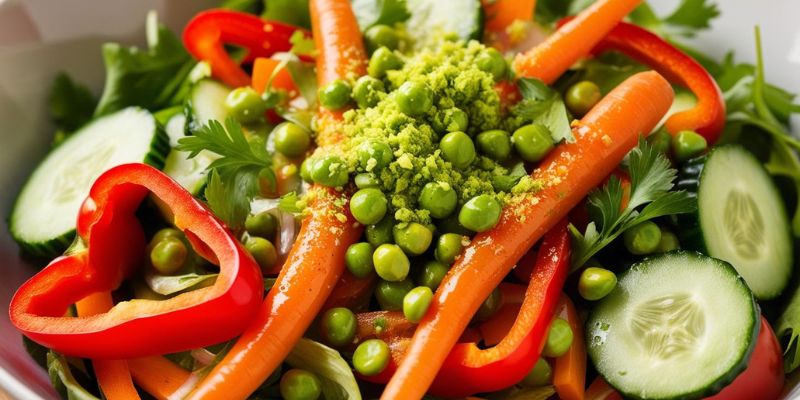
4. Loaded with Antioxidants
Green peas, the base of wasabi peas, contain several antioxidants like quercetin, ellagic acid, and luteolin. These compounds fight oxidative stress, a process that damages cells and accelerates aging. By combating inflammation, antioxidants also help lower the risk of chronic illnesses like heart disease, diabetes, and Alzheimer’s.
Interesting Fact: Luteolin is a type of flavonoid that has shown promise in studies for its cancer-fighting properties. Although wasabi peas won’t work miracles, regularly incorporating antioxidant-rich foods into your diet may support long-term health.
Example: Add crushed wasabi peas to a Buddha bowl filled with veggies, quinoa, and avocado. You’ll get an antioxidant boost with every bite.
5. Improves Insulin Sensitivity
Managing blood sugar is easier with snacks like wasabi peas. High in plant-based protein and dietary fiber, they help slow sugar absorption in your bloodstream, preventing spikes and crashes. The presence of manganese in green peas further supports insulin sensitivity, while the protein content helps stabilize post-meal glucose levels.
Fact: Studies show that diets rich in fiber and plant protein are associated with better blood sugar control in people with type 2 diabetes or prediabetes.
Example: For a diabetic-friendly snack, combine wasabi peas with roasted chickpeas or edamame for a crunchy and nutritious mix.
6. Convenience Meets Nutrition
One of the best things about wasabi peas is their grab-and-go nature. Unlike certain healthier options that demand preparation (like fresh veggies or smoothies), wasabi peas require no prep time. They’re perfect for busy professionals, parents, or anyone needing a quick nutritional boost on the move.
Pro Tip: Look for lower-sodium or less-sweetened versions of wasabi peas if you prefer a cleaner ingredient list. Alternatively, opt to make a homemade batch for full control over flavor and nutrition.
Example: Keep a small container of wasabi peas in your work bag or car for those moments when hunger strikes during a hectic day.
Creative Ways to Enjoy Wasabi Peas
Think wasabi peas are just for snacking? Think again! Their bold flavor and crunchy texture make them a versatile ingredient. Here are a few inspired ideas to incorporate them into your meals and snacks:
1. Trail Mix with a Kick
Combine wasabi peas with roasted almonds, cashews, and dried cranberries for a sweet, salty, and spicy treat. The nuts add healthy fats, while the dried fruit brings a natural sweetness to complement the heat of the peas.
Pro Tip: Add sunflower seeds or bits of dark chocolate for an even more dynamic trail mix.
2. Bold Salad Topping
Forget croutons! Sprinkle crushed wasabi peas over your salad for a spicy crunch. They pair particularly well with Asian-inspired salads featuring ingredients like sesame dressing, mandarin oranges, and shredded cabbage.
Example: Upgrade your sesame chicken salad by topping it with wasabi peas instead of fried wonton strips.
3. Crust for Seafood or Chicken
Pulverize wasabi peas into a fine coating and use them to crust proteins like salmon, chicken breast, or even tofu. The spicy, crispy layer adds depth and texture to your dish.
Instructions:
- Crush the peas into crumbs using a rolling pin or food processor.
- Coat your protein in a light layer of olive oil, then gently press into the crumbs.
- Bake or pan-sear as desired.
Classic Combo: Wasabi-pea-crusted salmon with a side of ginger-infused rice and steamed broccoli is a restaurant-worthy meal you can make at home.
4. Savory Granola Bars
Who says granola bars have to be sweet? Mix crushed wasabi peas into a batter of oats and honey to create a savory bar packed with crunch and spice. Throw in sesame seeds and roasted peanuts for additional texture and flavor.
5. Soup Garnish
Add crushed wasabi peas to creamy soups like tomato bisque or potato leek for a peppery, crunchy contrast. The crunch will slowly soften in the soup, releasing bursts of wasabi flavor.
6. Asian-Inspired Stir-Fry
Toss a handful of whole wasabi peas into your stir-fry toward the end of cooking. They retain their crunch while bringing a spicy bite to each bite of vegetables, tofu, or noodles.
7. Homemade Rice Bowls
Upgrade classic rice bowls by seasoning steamed rice with soy sauce, sesame oil, and fresh scallions. Top with wasabi peas for crunch and extra heat alongside teriyaki chicken or sautéed shrimp.
With these creative ideas, wasabi peas go from snack-time favorite to all-around kitchen hero. Add them to your pantry today, and spice up your meals with their bold flavor and exciting versatility!
“Unlock the secrets to using saffron like a pro with our guide on 13 Epic Saffron Spices Hacks Everyone Wants.”
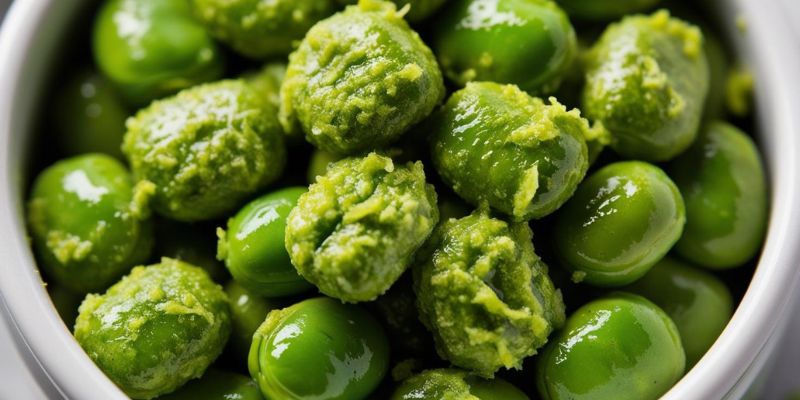
Final Thoughts on Wasabi Peas
Wasabi peas pack a serious punch—not just in flavor, but also in nutrients. High in protein, fiber, and antioxidants, they’re a snack that can satisfy your cravings while supporting overall health. However, like any processed snack, moderation is key. Enjoy wasabi peas as part of a balanced diet and explore creative ways to incorporate them into meals.
Which wasabi peas benefit impressed you the most? Head to your pantry or nearest store and spice up your snack game today!
Discover how Himalayan Pink Salt can transform your health and wellness in our detailed guide on 9 Fascinating Himalayan Pink Salt Benefits.
Stay connected with us!
- Follow us on Instagram: @RoastedKitchen25 for daily cooking inspiration.
- Subscribe to our newsletter for exclusive recipes, expert tips, and kitchen hacks straight to your inbox!
Additional Frequently Asked Questions About Wasabi Peas
1. Where Did Wasabi Peas Originate?
Wasabi peas are thought to have originated in Japan, inspired by the traditional use of wasabi as a condiment for sushi and sashimi. Combining the heat of wasabi with crunchy green peas quickly became popular, and the snack has since been adopted and adapted globally. While authentic wasabi (from the wasabi plant) was traditionally used, many modern versions use a blend of horseradish and mustard for the same zesty flavor.
2. Are Wasabi Peas Vegan?
Yes, most wasabi peas are vegan-friendly! Their core ingredients include green peas, wasabi powder or horseradish, sugar, and salt, all plant-based. However, it’s important to check the label, as some brands may add non-vegan ingredients like milk powder or other animal-based additives. For a fully vegan option, making them at home ensures complete control over the ingredients.
3. How Spicy Are Wasabi Peas?
Wasabi peas pack a punch with their fiery flavor and nose-tingling heat. The spice level can vary based on the brand and amount of wasabi or horseradish used. For those new to spicy snacks, the heat might feel intense at first but typically fades quickly. If you prefer a milder version, look for brands labeled “light wasabi” or mix them with nuts or crackers to balance the spice.
4. Are Wasabi Peas Suitable for Kids?
Wasabi peas can be suitable for older kids who enjoy spicy flavors, as long as they’re consumed in moderation. However, young children or those sensitive to heat might find the spice overwhelming. It’s also smart to introduce them gradually and ensure that they are chewed well to avoid any risks of choking, as the peas are hard and crunchy.
5. How Do Wasabi Peas Compare to Other Snacks?
Compared to many traditional snacks like chips or candy, wasabi peas are a healthier option. They’re lower in unhealthy fats, offer more protein, and contain fiber to promote better digestion. While they do contain some sodium and sugar, portioned servings still make them a more nutrient-dense choice. For those seeking a balance of crunch, nutrition, and bold flavor, they stand out as a superior alternative to most processed snack foods.

Food has been at the heart of my life since childhood. My father, a passionate restaurateur, owned and ran Cave Way, a beloved restaurant in Narayanganj, Bangladesh. For 19 wonderful years, Cave Way delighted customers with its warm atmosphere and mouthwatering dishes. It was more than a restaurant; it was a community landmark. When my father passed away, the restaurant’s doors closed, but its legacy lived on in me. As a businessman and food enthusiast, I’ve always felt a connection to the joy and stories that food brings into our lives. Roasted Kitchen is my way of honoring that legacy, sharing my passion, and connecting with others who love cooking as much as I do.

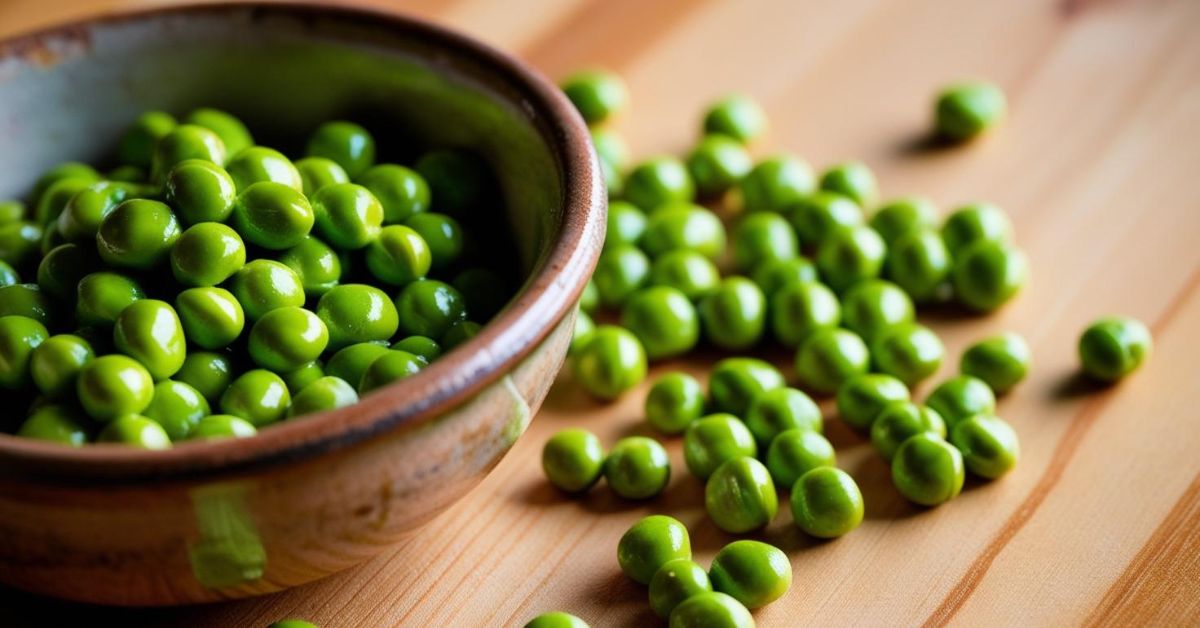

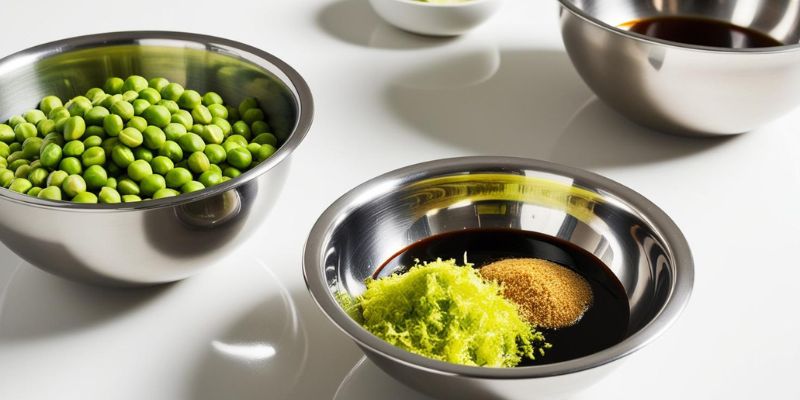








 Subscribe to our free newsletter for tips, tutorials, and insights!
Subscribe to our free newsletter for tips, tutorials, and insights!